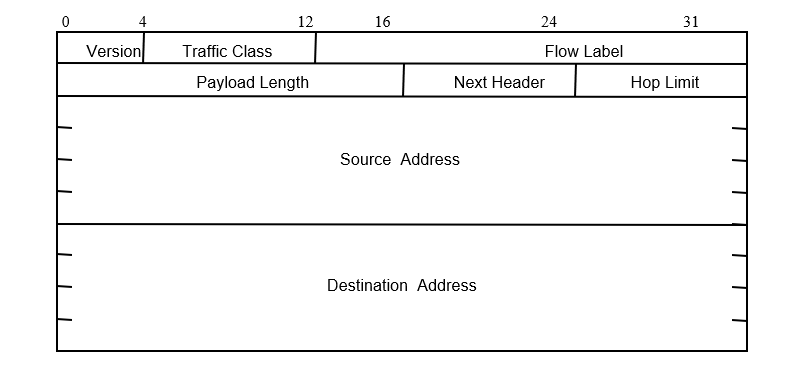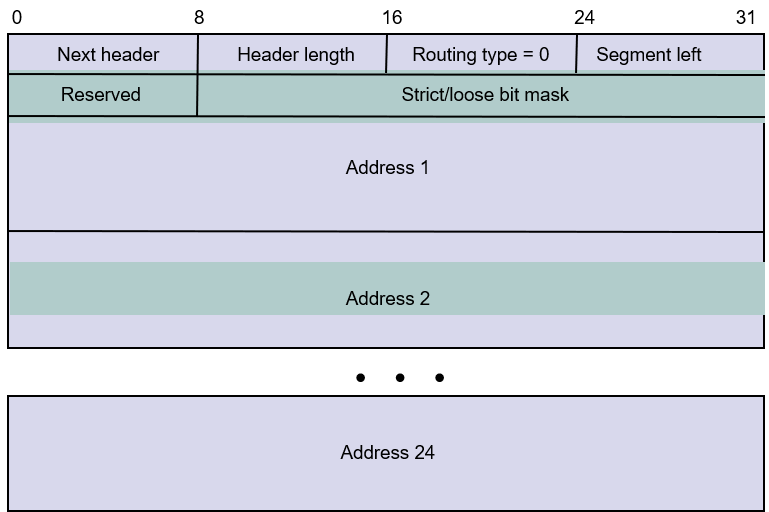IPv6
- Longer address field:
- 128 bits can support up to 3.4 x 10^38 hosts
- Simplified header format:
- Simpler format to speed up processing of each packet header
- All fields are of fixed(固定) size
IPv4 vs IPv6 Overview
- IPv4 vs IPv6 fields:
- Same: Version
- Dropped: Header length, ID/flags/frag offset, header checksum
- Replaced:
- Datagram length by Payload length
- Protocol type by Next header
- TTL by Hop limit
- TOS by traffic class
- New: Flow label
IPv6 Header Format

- Version field same size, same location
- Traffic class to support differentiated services
- Flow: sequence of packets from particular source to particular destination for which source requires special handling
- Payload length: length of data excluding header, up to 65535 B
- Next header: type of extension header that follows basic header
- Hop limit: hops packet can travel before being dropped by a router
Extension Headers
- Allows an arbitrary(随机的) number of extension headers be placed between the basic header and the payload (the extension headers are chained by the next header field)
Large Packet (Jumbo packet): payload>64K

- Fragmentation:
- If the packet is beyond the MTU, the packet will be discard.
- At source only
Source performs “path MTU discovery” (a fragment extension header for each packet fragment)

Source Routing: strict/loose routes

IPv6 Addressing
- Address Categories
- Unicast: single network interface
- Multicast: group of network interfaces, typically at different locations. Packet sent to all.
- Anycast: group of network interfaces. Packet sent to only one interface in group, e.g. nearest.
- Hexadecimal(十六进制) notation
- Groups of 16 bits represented by 4 hex digits
- Separated by colons
- 4BF5:AA12:0216:FEBC:BA5F:039A:BE9A:2176
- Shortened forms:
- 4BF5:0000:0000:0000:BA5F:039A:000A:2176
- To 4BF5:0:0:0:BA5F:39A:A:2176
- To 4BF5::BA5F:39A:A:2176
- Mixed notation:
- ::FFFF:128.155.12.198
Migration from IPv4 to IPv6
- Gradual transition from IPv4 to IPv6
- Dual(双重的) IP stacks: routers run IPv4 & IPv6
- Type field used to direct packet to IP version
- IPv6 islands can tunnel(打通隧道) across IPv4 networks
- Encapsulate(封装) user packet insider IPv4 packet

Disscussion
Does it makes sense to do reassembly at intermediate router?
- No, because the packet may be de-fragmented again, and all the time required to wait for all fragments and to reassemble the packet will be wasted. Also it is not guaranteed that all fragments go through the same path and arrive at the same node in a datagram network such as IP.




















 3889
3889

 被折叠的 条评论
为什么被折叠?
被折叠的 条评论
为什么被折叠?








